On 3 September, the exhibition ‘Ecovention Europe: Art to transform ecologies 1957 – 2017’ opened in Museum de Domijnen, Sittard. I attended this opening on a very sunny Sunday afternoon, because 1) the museum is only a 10-minute bike ride away, 2) I am very interested in ecological art, 3) during my bachelor I had to read a book by the exhibition’s curator Sue Spaid, which I really enjoyed, and 4) it gave me a great excuse to get out of the house on an otherwise wasted day. So I mounted my blue two-wheeled stallion and cycled to the new location of Museum de Domijnen in Sittard, which is now split up into two locations, one for historical art and the city archive and one for contemporary art.
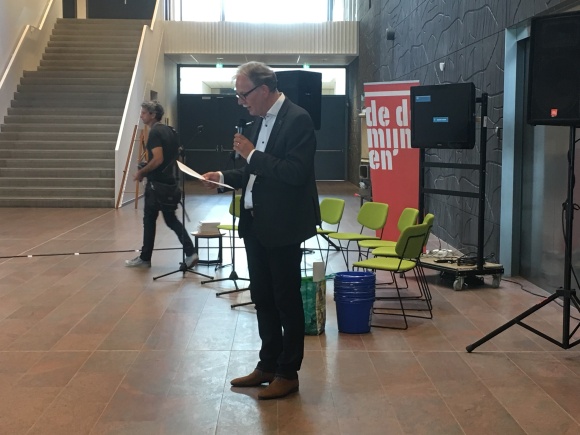
The opening was opened by director Tom de Rooij, who talked about how the exhibition came about both creatively and financially. He then gave the microphone to Sue Spaid, curator of Ecovention Europe, who was wearing a very appropriate skirt for this special occassion!
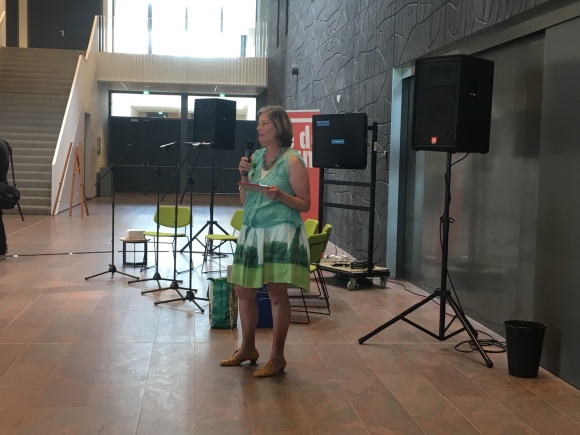
Sue Spaid talked about how the museum approached her to work on this exhibition. She has retired from curating, but the theme and subject matter of this exhibition were so close to her own research and her own heart that she decided to take up on the project. She spoke more in debt about several projects that artists have put on for Ecovention Europe, like Koen Vanmechelen’s Chicken Project (where people are invited to take home a chicken that matches their DNA best for a set period of time).
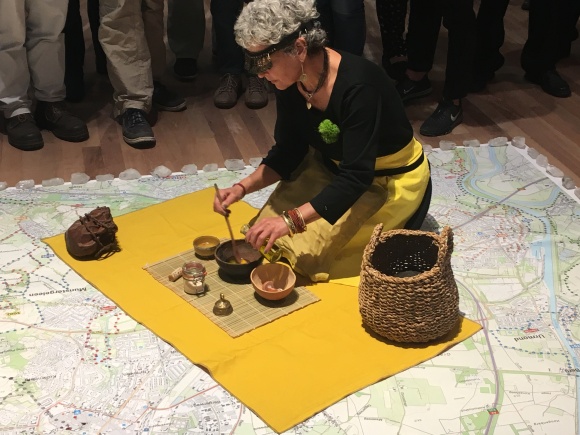
The exhibition was then opened for the public. The art collective Touchstone Collaboration did a performance called Sacred Mayonnaise, starting with a statement to support the gardens in Sittard. The performer shown above then started with an egg, adding oil to the yolk in a sacred-like ritual to make mayonnaise. A second performer started laying out edible flowers and fruits on a table. When the mayonnaise was ready, the performers invited the audience to eat the mayonanise and produce from the local garden. The exhibition was then officially opened for the audience to have a first walk around. (Note: this vegan of course did not try the mayonnaise, but from what I heard around the room it tasted very good!)
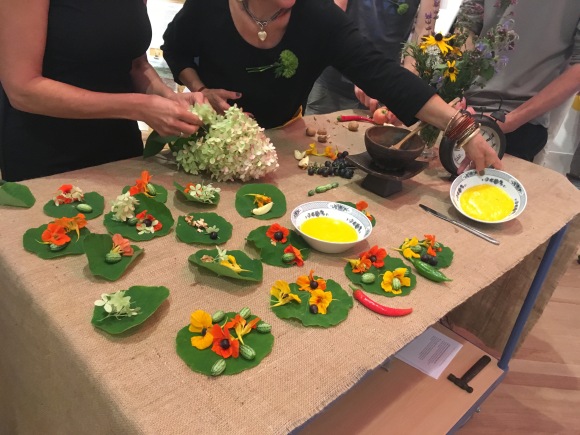
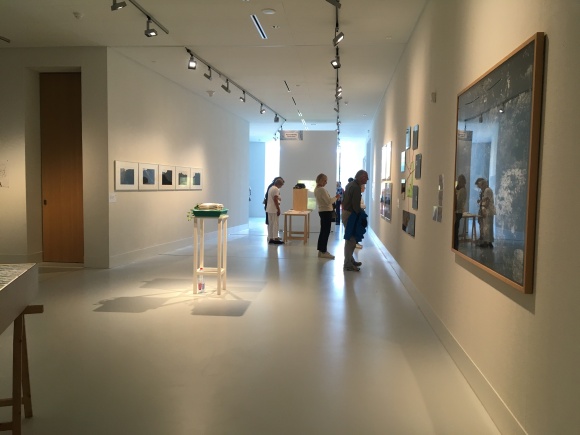
I haven’t been to the new museum building yet, so it was a lot to take in to visit both an exhibition and discover a new building. But I was very impressed by both of them. The building is clean and has a logical floor plan, resembling the classic white cube. Lately I have visited a lot of exhibitions that steered away from this idea, with walls that are more colourful and works of art that were more shattered across the wall or room, but I ain’t mad of seeing a white cube art gallery if it’s done correctly. Here it certainly works well with the exhibited art, which are very diverse in both subject matter and medium and do not need a lot of distraction from how the exhibition is built.
The exhibition is sorted into eight themes, with a lot of overlap: several artworks are classified into more than one category. This is a way to roughly structure the exhibition, but because of this overlap it doesn’t matter much in which way you are viewing the exhibition. If you are not interested in one theme or want to solely focus on another one, you can just choose whatever you want to see, because there’s plenty of it. Very smartly done by the curator! The selected themes are: activism, valuing anew, biodiversity, environmental justice, restoration/reclamation, food security, climate change, and oikos (well-being).
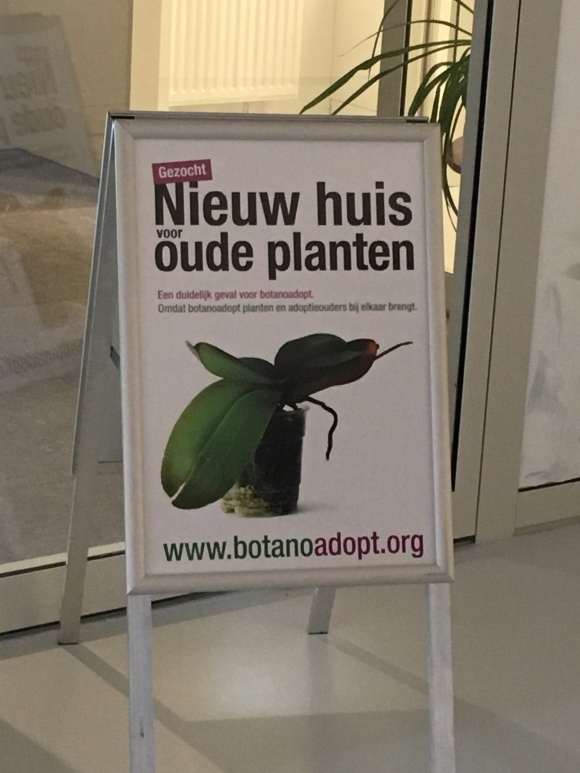
One of the first artworks that you see upon entering is 431art’s project BotanoAdopt, where you can literally adopt a plant from somebody who isn’t able to take care of it any more, as if it were a pet. A great initiative that is a good example of our current sharing economy. I definitely became interested in adopting a plant or two, but I’m not sure if the cats would love that…
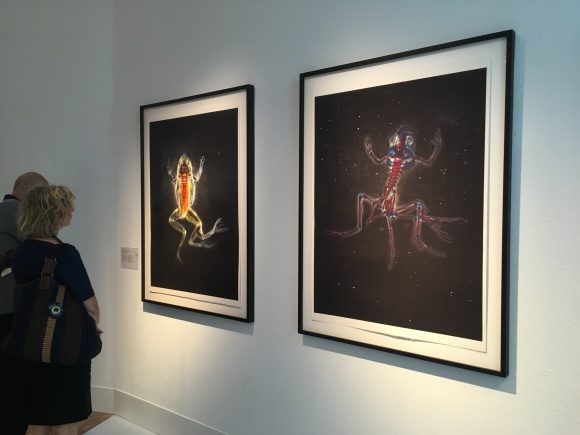
A familiar face in the exhibition was Brandon Ballengée, an American artist who had presented work in De Domijnen Sittard before in 2014 (back when the museum was still called Het Domein and was settled in the old location). He exhibited three works from the series ‘Malamp Reliquaries’ from 2013. He researched amphibians that were deformed as a result of pollution and presented these frogs as mythological creatures, giving them names like ‘Pandora’ and ‘Procrustes’ (shown here on the left and right). The prints are classified under the theme of biodiversity, but definitely carry an activist note in them as well: if we don’t do anything about water and soil pollution, the inhabiting amphibians will suffer, lose their ability to carry out normal tasks and might not be able to reproduce in the future.
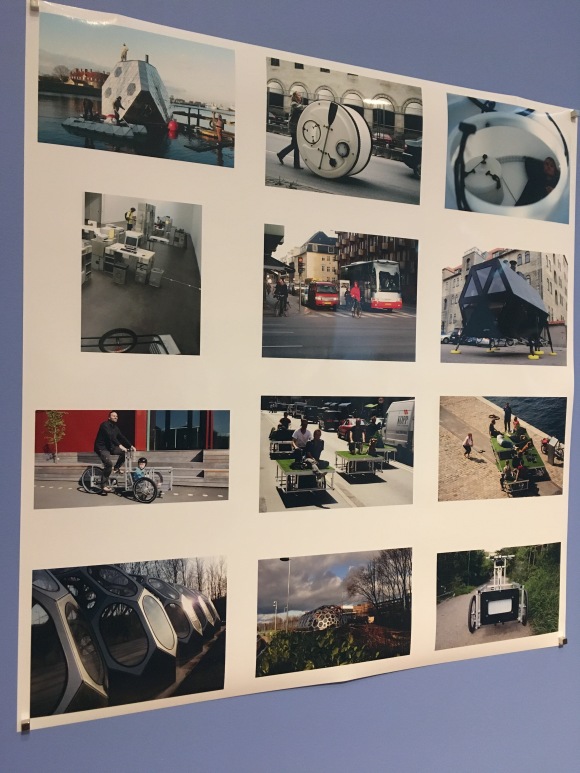
Artist collective N55 has been publishing ‘how to build’ manuals since 1994 for structures that focus on mobility, public space, renewable energy and urban farming. People across the world can replicate their efforts, as long as they credit N55. Shown on this poster are some of the objects they made between 1994 and 2017. The picture on the bottom right is a bike that helps to clean the air, which is also on show in the exhibition.
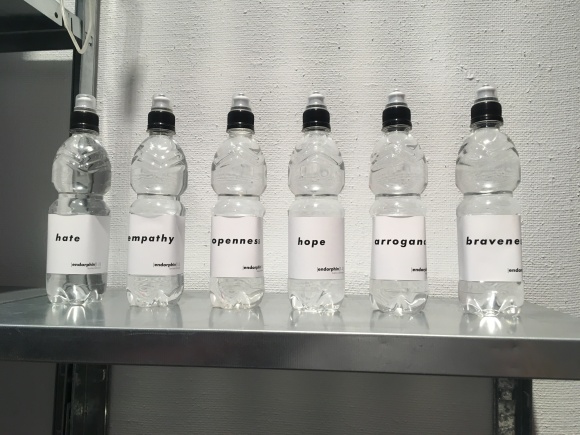
To conclude: the exhibition was both a great overview of what has been done in ecological art over the last decades and what is currently going on in eco-art. Curator Sue Spaid managed to make a perfect selection of works and seamlessly connects the broad canon of eco-art with local projects around Sittard. De Domijnen has a one of a kind exhibition in its hands here that can easily become one of the landmark shows in contemporary ecological art. The museum has so many wonderful artworks on show, as well as other projects around the city, that a single visit would almost sell the exhibition short. This is more than an exhibition, this is also a statement in itself: it is time to take not only our environment (both globally and locally) seriously, but also the art that focuses on that. The exhibition is urgent, activist, current and most of all, absolutely stunning.
The exhibition ‘Ecovention Europe: Art to transform ecologies 1957 – 2017’ will be on show in Museum de Domijnen Sittard from 3 September 2017 to 7 January 2018.
